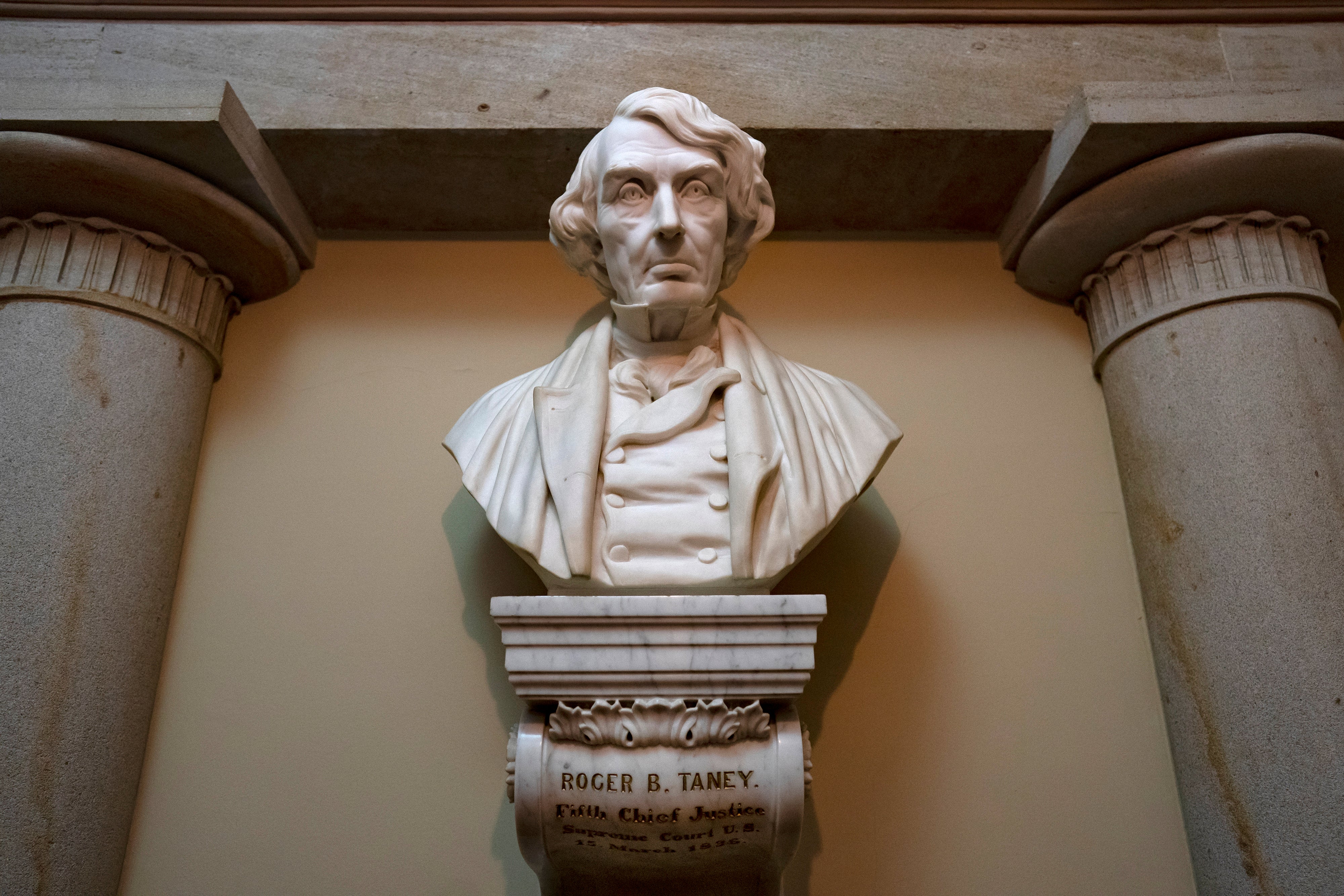Congress acts to remove bust of Dred Scott decision author
The bust of a U.S. Supreme Court justice who wrote an infamous decision on slavery could soon be leaving the Capitol

The House passed legislation Wednesday that calls for removing from the Capitol a bust of the U.S. Supreme Court justice who wrote the infamous 1857 Dred Scott decision that held African-Americans were not citizens.
The bust of Roger B. Taney, the nation's fifth chief justice, sits inside the entrance to the Old Supreme Court Chamber in the U.S. Capitol. The chamber is where the high court met from 1810 until 1860. Taney led the court in that period, from 1836 to 1864.
The legislation also commissions a bust of Supreme Court Justice Thurgood Marshall to be placed somewhere in the Capitol. Marshall became the court's first Black justice in 1967.
The bill was passed by voice vote and now goes to President Joe Biden to be signed into law.
The notorious Dred Scott decision held that Blacks were not citizens and therefore had no right to sue in federal court. Rep. Steny Hoyer, D-Md., led the effort in the House to remove the Taney bust. Taney was born in Maryland and statues of him in the state were also previously removed.
“Over 3 million people visit our Capitol each year," Hoyer said. “The people we choose to honor in our halls signal to those visitors which principles we cherish as a nation."
“For Black Americans who have grown up in segregation, face racial violence and still confront institutional racism today, seeing figures like Taney honored here is a searing reminder that the past is present."
The House had earlier passed a bill to remove the Taney bust along with three other statues honoring white supremacists — including former U.S. Vice President John C. Calhoun of South Carolina. But legislation was narrowed in scope to win over senators who want to continue the practice of letting states act on their own to replace the statues they place in the Capitol.
Rep. Al Green, D-Texas, said that as a “son of the segregated South," he was grateful for the bill.
“To those of us who have had to sit in the back of the bus, the balcony of the movie and go to the back doors of restaurants, it means a lot," Green said.
The bill states that while the removal of the bust from the Capitol does not relieve Congress of the historical wrongs it committed in protecting slavery, it expresses the recognition by Congress “of one of the most notorious wrongs to have ever taken place in one of its rooms."
The legislation directs the removal of the bust within 45 days of the bill being enacted into law. It will then remain in the custody of the Senate Curator. It also calls for entering into an agreement to obtain a bust of Marshall within two years, and that priority for its location should be near the Old Supreme Court Chamber.
Bookmark popover
Removed from bookmarks